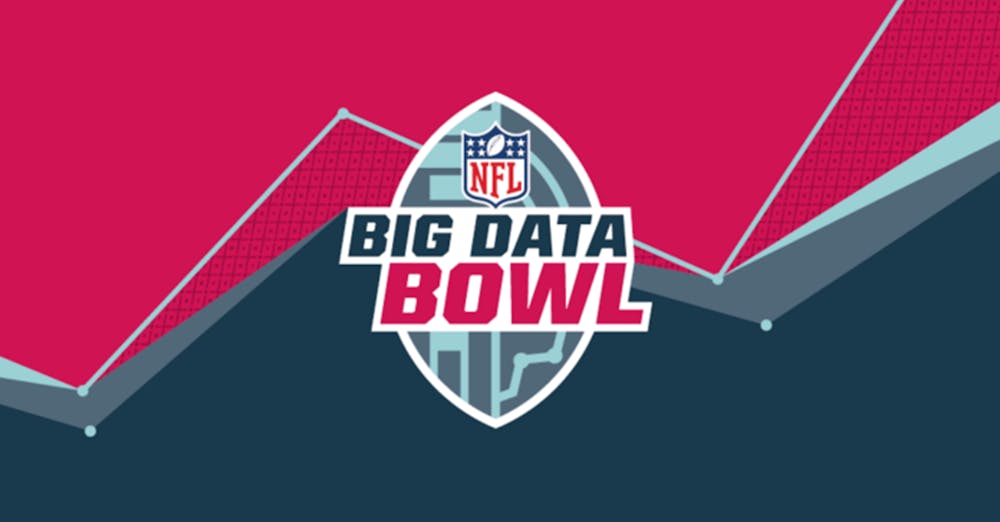
A team of four Penn graduate students won $15,000 as finalists for the 2021-2022 NFL Big Data Bowl competition and presented their project on March 18.
For the competition, teams were tasked to come up with a project analyzing NFL teams using three years of data. The winning team — chosen out of eight finalist teams — will be announced in early April and win an extra $10,000.
The Penn team — applied math and computational science Ph.D. candidate Ryan Brillstatistics Ph.D. candidate, Ryan Gross, computer science master's student Tai Nguyen and data science master's student Joey Rudoler — designed an algorithm to predict the best path for kick returners to run after catching the ball.
Brill said the goal of their project was to find the most successful run path for kick returners during a game. The team designed an algorithm to predict the best path for a player to run after catching the ball.
“We basically built a robot that says, given all the locations of all the players, which direction you should go,” Brill said. “We showed that a person who makes decisions close to our algorithm has observed long kick returns, so that shows that our algorithm is at least decent."
Visual rendering courtesy of Ryan Brill.
The group presented to NFL Director of Football Data and Analytics Michael Lopez and other staff members, and sent a recording of the presentation to a panel of judges. The Penn team also had the opportunity to send their work to an NFL team; they sent it to The Ravens.
As a long-time football fan studying statistics, Brill said that he joined the competition so he could combine both of these interests, and was eager to work with tracking data that is not normally released to the public.
Amazon records the location, speed, acceleration, and direction of all 22 players on a football field for every tenth of a second — for this competition, they released 2018, 2019 and 2020 data to the Big Data Bowl teams.
“Normally, that data is proprietary, so only the [football] teams or really rich entities can buy it,” he said. “But they just released it to the world for this competition. So it's an interesting chance to work with that, and it's very complicated.”
Armed with the data, the Big Data Bowl teams were given three months to complete their project, which was due Jan. 6.
Teams may compete in either the College category — which includes current graduate or undergraduate students — or the Open category, which the Penn team entered. Nyugen said they chose to compete there for a greater challenge, as there are more competitors.
Brill’s favorite part of the competition was the challenge of working with so much tracking data.
“When you're in statistics class as an undergrad, they just say oh, let's predict height from age and it's two variables. You can draw an XY plot and easily draw the little line,” he said. “But now it's every tenth of a second for every player.”
The hardest part of the competition for Brill, though, was when he spent 12 straight hours fixing a bug ahead of the team's final presentation.
“I was just double checking things and I saw a little bug. It didn't impact [the program] that much, but it’s a scientific process. You have to be truthful, you have to fix it,” he said.
Nguyen said that the exposure to the NFL was a highlight of the competition.
“We got to interact a lot with some directors in the NFL,” he said. “The fact that those people organized the competition, and talked to us, and were really curious and thought that our project was interesting was probably the coolest part."
The Daily Pennsylvanian is an independent, student-run newspaper. Please consider making a donation to support the coverage that shapes the University. Your generosity ensures a future of strong journalism at Penn.
Donate



